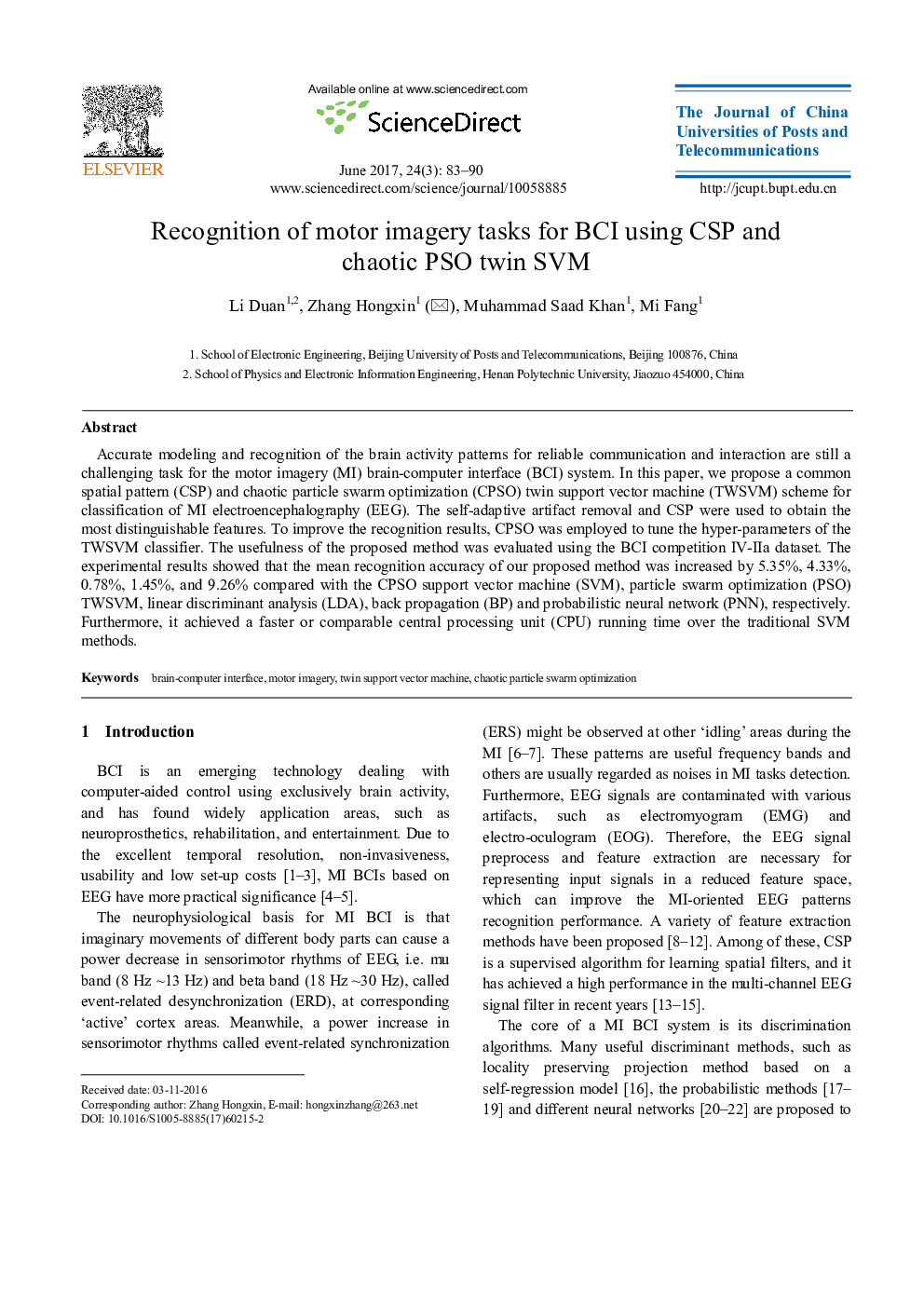| Article ID | Journal | Published Year | Pages | File Type |
|---|---|---|---|---|
| 7116807 | The Journal of China Universities of Posts and Telecommunications | 2017 | 8 Pages |
Abstract
Accurate modeling and recognition of the brain activity patterns for reliable communication and interaction are still a challenging task for the motor imagery (MI) brain-computer interface (BCI) system. In this paper, we propose a common spatial pattern (CSP) and chaotic particle swarm optimization (CPSO) twin support vector machine (TWSVM) scheme for classification of MI electroencephalography (EEG). The self-adaptive artifact removal and CSP were used to obtain the most distinguishable features. To improve the recognition results, CPSO was employed to tune the hyper-parameters of the TWSVM classifier. The usefulness of the proposed method was evaluated using the BCI competition IV-IIa dataset. The experimental results showed that the mean recognition accuracy of our proposed method was increased by 5.35%, 4.33%, 0.78%, 1.45%, and 9.26% compared with the CPSO support vector machine (SVM), particle swarm optimization (PSO) TWSVM, linear discriminant analysis LDA), back propagation (BP) and probabilistic neural network (PNN), respectively. Furthermore, it achieved a faster or comparable central processing unit (CPU) running time over the traditional SVM methods.
Keywords
Related Topics
Physical Sciences and Engineering
Engineering
Electrical and Electronic Engineering
Authors
Li Duan, Zhang Hongxin, Muhammad Saad Khan, Mi Fang,
